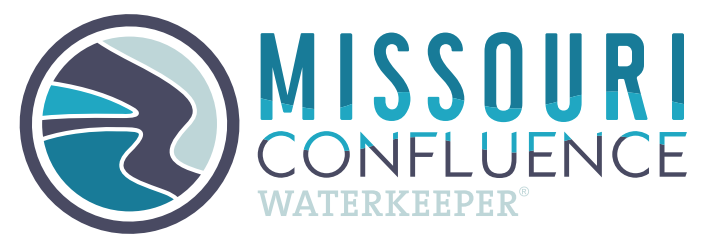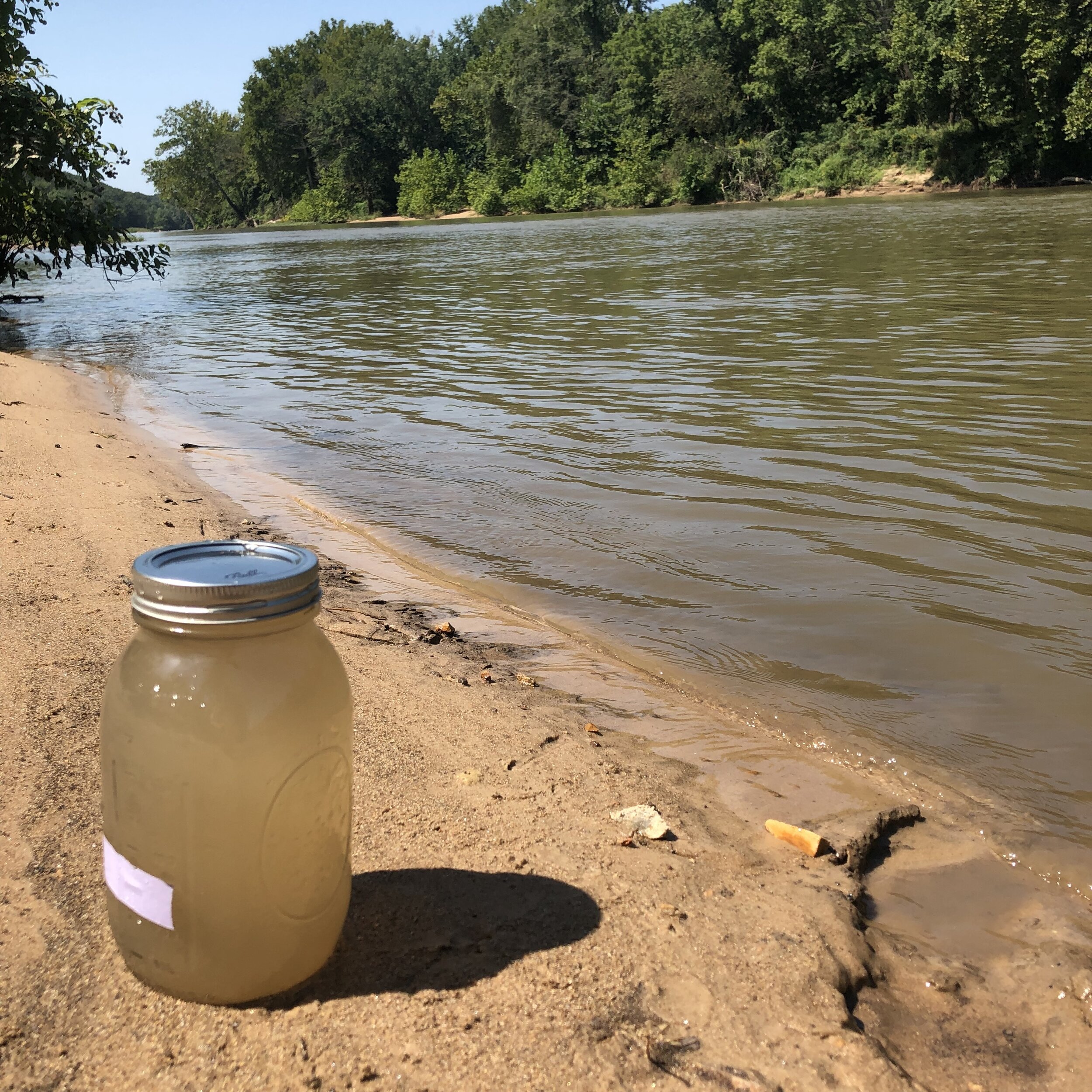tributary.
A (Micro)Plastics Monitoring, Mapping, and Outreach Initiative for Missouri Waterways
What are Microplastics? Plastic particles smaller than 5mm (about the width of a pencil eraser) are considered microplastics. They originate from a variety of sources including larger plastic pieces that have broken down, fibers from clothing, film from plastic bags and wrappers, foam from coffee cups and food containers, resin pellets from plastic manufacturing (nurdles), or in the form of microbeads, which are small pieces of manufactured polyethylene plastic beads added as exfoliants to health and beauty products like cleansers and toothpastes.
Why test for Microplastics? Plastics break down over time and find their way into our rivers, fish and wildlife, and ultimately us. Pollutants including pesticides and manufacturing chemicals can adhere to microplastic particles as they move through the environment into our food web and drinking water. Not much is known about the scope and impact of these microplastics in Missouri’s water, but we are working to change that.
What is Tributary? Tributary is a (Micro)Plastics Monitoring, Mapping, and Outreach initiative launched by Missouri Confluence Waterkeeper in 2019. It is a citizen-science project that identifies the location and amount of microplastics in ground, surface, and tap water throughout the state of Missouri. Using the collected data and AI predictive modeling, we are tracing plastic pollution to its source, exploring the story of how litter moves through our waterways, and working at the grassroots level to affect change.
Testing for microplastics in the Gasconade River @MOwaterkeeper
Our partners at the Illinois Sustainable Technology Center at the University of Illinois (Prairie Research Institute) analyzed the first round of samples collected during August and September 2019. In addition to calculating the amount, microplastics were classified by type (fragment, filament, pellet, film, or foam) and size.
As data becomes available over the next two years, we will add more sites to the map below. Round two data will include 25+ additional sites and results will be available soon.
Get Involved! Email us if you would like to sponsor a testing site or volunteer to collect a sample. Missouri Stream Teams, be on the lookout for more information about how to incorporate microplastics testing into your current water monitoring efforts, or email us if you would like to get started now!
Blue stars indicate a site has tested positive for microplastics. Green dots indicate an absence of microplastic particles.
Looking for more information on Microplastics? Check out our resources page by clicking here, or read more about microplastics on our blog post coming soon...



